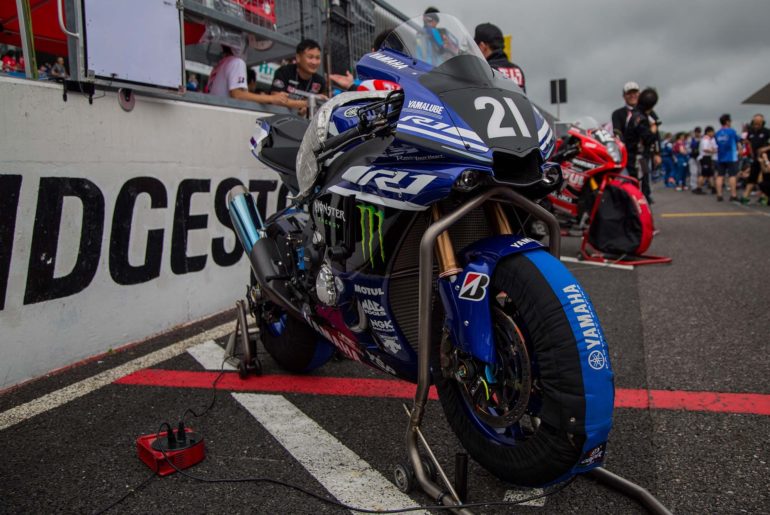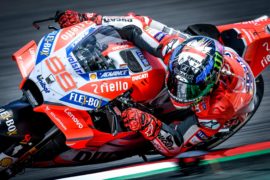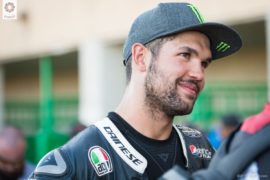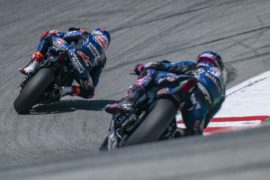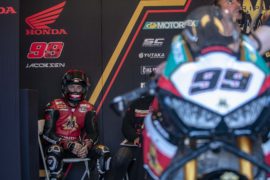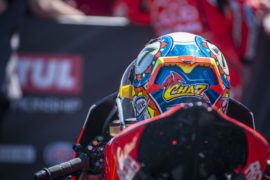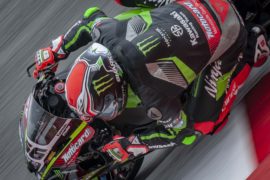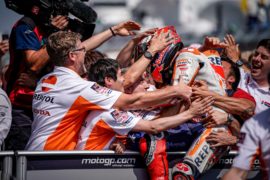Compromise has little place in most forms of racing. Speed is of the essence and everything else is secondary to it. In Endurance, the same principle guides the way, but there are compromises to be made. Speed is as necessary in the pit lane as it on the race track.
Being able to repair any damage quickly and easily is crucial. At this weekend’s Suzuka 8-Hours, we will see the fruit of that work once again, but ahead of this year’s edition, we take another look at the YZF-R1 that took the victory. It deserves one last moment in the spotlight.
With fewer restrictions in place on manufacturers, the return of “Suzuka Specials” in recent years has allowed the Japanese manufacturers to flex their creative muscles.
At the Suzuka 8-Hours, brain power is more important than horsepower, and finding a way to get the power to ground, by electronics, suspension or tires, is crucial.
Innovation is everywhere on the Suzuka grid, and last year’s winner was no exception..
The current generation R1 is undefeated at Suzuka since its 2015 introduction. This Yamaha Factory Racing Team YZF-R1 is unlike any other in the world, with a host of strictly factory parts including the titanium exhaust.
With open regulations for electronics, a tire war, and plenty of scope for innovation in the rulebook, the machine that will be raced this year by Katsuyuki Nakasuga, Alex Lowes, and Michael van der Mark is very different to the trio’s regular YZF-R1 mount.
The factory team’s Yamaha YZF-R1 breaks from the standard and uses Kayaba suspension, which makes it an oddity in a world dominated by Öhilns. Cloaked in carbon fiber, this bike is a masterpiece of what can be achieved when restrictions are eased.
It is often said that endurance racing is the last bastion of design and technological freedom in motorsport. Whether it was Audi’s decision to use a diesel engine on four wheels, or the current breed of two-wheeled endurance bike, it’s clear that there is plenty of innovation on the grid.
“The engines are different between the bikes because the Suzuka machine has to last eight hours but the electronics are very different,” Van der Mark told us last year.
“On the Suzuka bike, they are so smooth. There are some small differences which make the bike feel easier to ride. It still has the same character as the WorldSBK bike, but it’s so much easier to control the power with the electronics on the Suzuka bike. I’d love to have that on my bike!”
Everything on any racing machine is built with speed in mind, but in endurance racing it is also built with speed of maintenance in mind. Being able to change wheels quickly, and to save time while repairing crash damage, is crucial.
Any seconds gained in the pits are as precious as gold dust, and being able to work efficiently is a prized asset for any team. Everything is designed with a tolerance for working with the minimum of intrusion.
Compared to a WorldSBK or MotoGP bike, this machine is designed with quick release mechanisms and ease of work at the forefront.
Being able to replace a chain, top-up fluid, and even how fast you can hoist the bike on a paddock stand, are all leading priorities rather than an afterthought – the focus remains on speed, but with more than a single eye on the stamina required to go racing over eight uninterrupted hours.
This year the Yamaha Factory Racing Team will be seeking a fourth consecutive victory in the blue-ribbon race, but on the track will also be the GMT94 Yamaha squad, which will be looking for an FIM Endurance World Championship title.
Beyond the notable difference in goals, the FIM EWC Yamahas differ in an another way, as they will be shod with Dunlop tires, while the Factory Racing Team will once again use Bridgestones.
This is a key advantage, with the Japanese rubber having been the tire to beat in the heat for years, and another insight into the challenge of endurance racing.
The feedback from the Suzuka races played a role in the development of the Bridgestone tires used in MotoGP up until 2015, and the feeling is very similar.
The tires give a strong front-end feeling, and plenty of confidence, once they are into their operating window, but if they should fall out of that window, there can be a high price to pay – and that is when the ability to quickly repair damage returns to the fore.
With three riders on the bike, it will never be perfect for any one rider. The challenge is making sure it is a bike that all three riders are happy with.
For this year, that will mean Yamaha adapting rider positioning to suit van der Mark’s tall frame, compared to the smaller statures of Lowes and Nakasuga – they will change their requirements on setup to find the best compromise for all of them.
Will it be enough to win the unobtainable fourth victory in a row? That remains to be seen.
Photos: © 2017 Steve English – All Rights Reserved
Our Suzuka 8-Hours coverage is made possible by our A&R Pro members. If you like reading this unique race coverage on Asphalt & Rubber, you should consider supporting this content by signing up for A&R Pro.

